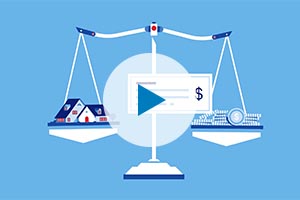As a business owner, you know reaching customers is critical to success, and that means creating a winning SEO strategy. Get started with these four steps.
You’ve heard the saying: “If a tree falls in the forest, does anyone hear it?” The same could be said for companies on the internet: If no one can find your website, do you really exist? That’s where search engine optimization, or SEO, comes in.
What is SEO? SEO is the process of growing the organic (non-paid) visibility of a website or a web page in a search engine's results.
here are many aspects to SEO, from the words on your page to the way other sites link to you on the web. Sometimes SEO is simply a matter of making sure your site is structured in a way that search engines understand.
SEO can attract customers to your site by improving rankings, driving traffic and building brand awareness.
Search engines
While it's possible to optimize differently for different search engines, in the United States, Google has more than 60% of the search engine market share.
According to Smart Insights and Statista, Google holds 63.2% of the market share while Microsoft holds 23.7%, with other search engines rounding out the rest. That equals 1.2 trillion Google searches per year, globally.
Mobile SEO optimization is also key. A 2017 report from Statista shows that more than 50% of web traffic happens on mobile devices.
How do you use SEO?
Incorporating SEO practices into your business plan might seem daunting, but there are a number of basic steps you can take to try to improve your organic search results — which is the likelihood that someone will come across your website on their own.
Step 1: Select effective keywords
Search engines look for specific words or phrases on web pages, known as keywords, to help generate results. Choosing relevant keywords is essential: Use words and phrases that your customers are most likely to search.
Also consider using descriptive phrases or “long-tail” keywords, otherwise known as key phrases, that your customers are likely to use in a search. For instance, your keywords might be “bakery” and “coffee shop,” while your long-tail keywords might be “best coffee shop in Boston” or “gluten-free baked goods.”
70% of searches include key phrases with a 36% conversion rate on average.
What is a conversion rate? According to Neil Patel, a conversion rate is a metric you determine based on your business goals.
Step 2: Place keywords in strategic places
Use your keywords and phrases throughout your site to increase your chances of being ranked by a search engine. Multiple usages can help search engines find your keywords, which can better determine how your page matches a person’s search.
Think beyond your marketing content: Use keywords in your filenames, page titles and image descriptions. However, be careful not to stuff keywords into your content just to try to improve your results. If search engines detect this — known as keyword stuffing — your site may be penalized.
Consider using these keyword research tools:
Step 3: Develop SEO-focused content
Consider creating content specifically for search. Think about the type of information your customers might search for and develop content to meet their needs. Use language they’re most likely to use. For instance, you might create a blog targeted at the types of questions you regularly get on your website. Websites with active blog content have 434 percent more search-indexed pages, according to the Content Marketing Institute.
Step 4: Link to your website as much as possible
Direct potential customers to your site via other websites or social media. This can both increase your potential SEO ranking and boost your site’s credibility.
To do this, consider a listing on a business or industry directory, and always include a link to your website in any social media posts. You could also consider writing posts for other websites. Businesses that engage in guest blogging can generate 97% more inbound links, according to Neil Patel, an SEO expert who advises businesses on maximizing their search.
Whether you use the steps here or do research to create an SEO model that’s unique to your business, it’s important to have a plan for attracting page views. A consistent SEO strategy can increase your customer base and your business’ sales potential.
SEO is just the beginning. Learn more about how other essential marketing tactics can support your business.


















